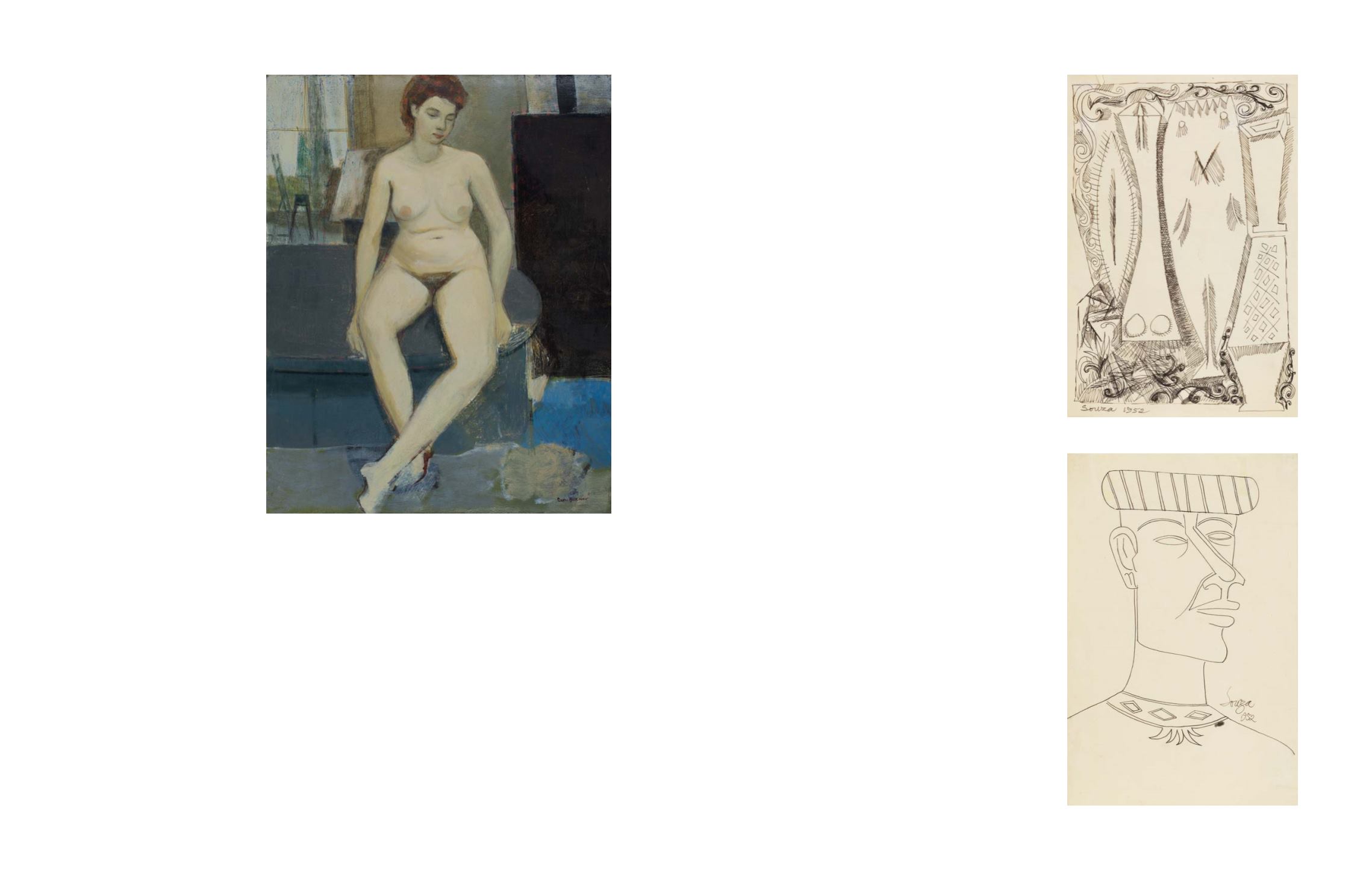

66
67
35
F N SOUZA
(1924 ‒ 2002)
Untitled
Signed and dated ‘Souza 1952’ (lower right)
1952
Ink on paper pasted on paper
15.5 x 10 in (39.5 x 25.3 cm)
Rs 1,50,000 ‒ 2,00,000
$ 2,240 ‒ 2,990
PROVENANCE:
Formerly from the Collection of Julian Sherrier, London
34
F N SOUZA
(1924 ‒ 2002)
Untitled
Signed and dated ‘Souza 1952’ (lower left)
1952
Pen and ink on paper pasted on mountboard
12.25 x 8.25 in (30.9 x 21.1 cm)
Rs 1,50,000 ‒ 2,00,000
$ 2,240 ‒ 2,990
PROVENANCE:
Formerly from the Collection of Julian Hartnoll, London
33
SAKTI BURMAN
(b. 1935)
Untitled (Nude)
Signed ‘SAKTi BURMAN’ (lower right)
Oil on canvas
36 x 28.5 in (91.4 x 72.4 cm)
Rs 20,00,000 ‒ 25,00,000
$ 29,855 ‒ 37,315
PROVENANCE:
Acquired directly from the artist, Paris
Private Collection, New Delhi
EXHIBITED:
Memory and Identity: Indian Artists
Abroad
, New York: DAG Modern, 14
September ‒ 2 December 2016; New
Delhi: DAG Modern, 19 December 2016 ‒
15 March 2017
The Naked and The Nude: The Body
In Indian Modern Art
, Mumbai: DAG
Modern, 7 October ‒ 10 December 2016
PUBLISHED:
Kishore Singh ed.,
A Visual History of
Indian Modern Art: Volume Two: Birth of
Modernism: Academic Realism
, New Delhi:
DAG Modern, 2014, p. 172 (illustrated)
Kishore Singh ed.,
The Naked and The
Nude: The Body in Indian Modern Art ‒
Edition Two
, New Delhi, DAG Modern,
2015, p. 72 (illustrated)
Kishore Singh ed.,
Memory & Identity:
Indian Artists Abroad
, New Delhi: DAG
Modern, 2016, p. 227 (illustrated)
Sakti Burman’s nudes were influenced by the European
tradition. The focus is on the form, with highlights and
shadows subtly merging to reveal the soft contours of
the body. Burman draws attention to the gently slouched
figure by keeping extraneous detailing to a minimum. The
background, including the bench she is seated on, the large
panel to her left, and the easel and canvas behind her, are
sparsely outlined and serve to accentuate the importance
of the central figure.
Born in Kolkata in 1935, Burman received a thorough
grounding in the Western academic tradition at the
Government College of Art & Craft in Kolkata. His foray
into art began with careful studies of nudes and still‒lifes,
which later laid a strong foundation for him to develop
a unique pictorial style in the following decades. In 1956,
he enrolled at the École Nationale Supérieure des Beaux‒
arts in Paris. The École des Beaux‒arts is well known for
nurturing the talents of some of India’s leading modernists,
including Amrita Sher‒Gil, S H Raza, Jehangir Sabavala and
Jogen Chowdhury. Burman’s own trajectory shifted to
mythical and fantastical beasts and humans painted using
a marbling technique, which became the focus of his art in
later years, but his underlying deftness with forms is seen in
this more traditional work.


















